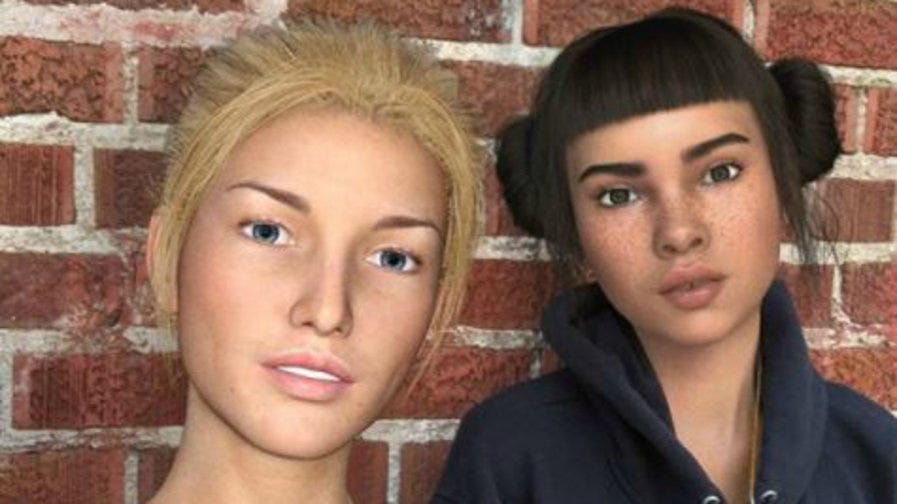Everything to know about digital celebrities and how they could change the world
Part II: How do digital celebrities progress?
Monetization


While a large portion of these celebrities are still in the experimental phase, there is a subset that are clearly pushing to monetize their social media presence in some way. Some may take a vertical focus, like food blogger Melissa Cohen tagging Blue Apron in her posts
Simple markets like food blogging make sense today, however as technology infiltrates these markets in a meaningful way, the quality of content will increase, making even more markets quite susceptible to the digital vs. human influence wars.
Digital Influencers can scale past humans.


Many influencers or social media personalities have attempted to break out of their domain and into the mainstream areas of music, TV, or film. Few have succeeded.
Often the talent agencies tell me that the level of talent/skill set to achieve stardom in these areas is a difficult barrier to entry, along with the strong brand association and fanbase of a given character that may make it hard for them to work within a larger portfolio of brands.
With digital celebrities, no longer can you age out of your demographic. You can freeze time, fast forward, or rewind, creating both a more relatable character as well as a much more in-depth storytelling mechanism where history, present, and future are all available for creation.
With potentially different humans controlling different skillsets of your celebrity, you then have the potential to close the gap from influencer/social media personality to mainstream talent.
Miquela’s pop album was an example of this and others will certainly follow suit over the next few years.

In addition to having the ability to scale talents, digital celebrities can scale utilization. While scarcity can drive the price of services up for a celebrity, there are some where volume is what creates revenue. A recent example of this is when famous Twitch streamer Ninja took 2 days off from streaming and thus lost 40,000 subscribers, costing him over $100k. When multiple people can utilize a likeness across different talent classes, you can imagine the possibilities that are unlocked by removing the volatility and deficiencies of humans.
Now these celebrities can be on tour, while filming commercials, modeling their new fashion line, or even starring in their own TV show or movie.
Building your own universe
In addition to creating a single character that can be monetized as an entity, another strategy will be telling a multi-character story and building your own universe. The lowered barriers of social media allow a cadence of storytelling to happen on a daily or even hourly basis, even if done just through photos (as mostly occurs today). I view this similar to popular text storytelling platforms such as Hooked, but instead there are characters with a physical manifestation, living on the same platforms as your friends, that can further connect the audience to their story.
By building a character universe, you allow for some form of virality to emerge via word of mouth growth of a given character, and thus the IP value of the universe.
Example: If I follow an Instagram account that details the life of a scientist named Rick Sanchez, but my friend follows his grandson Morty, we inherently will want to talk more about the other people showing up in their stories despite our affinities for different characters. We’re invested into the Rick & Morty universe and once Morty’s dad, Jerry creates an Instagram account, we’ll both likely follow it.


A more specific example of this is the ongoing interactions of Brud creations, Miquela, Bermuda, and Blawko. This allows you build a flagship character (in this case, Miquela) and then spin up multiple characters with a much faster ramp time than an entirely new account. Similar to how Marvel has created what feels like 100 movies about different Avengers characters in the past 3 years.
CryptTV is a tangential example of this as well. CryptTV uses rapid iteration and the lowered barrier of online distribution to test and expand upon universes and characters focused on horror.
Digital Celebrities must get more innovative
While many are running today’s playbook of simple storytelling one photo, inspirational quote, or anecdote at a time, there has been very little innovation on how to utilize the digital component to create a truly unique product. Creators must innovate.

Cameron-James Wilson is showing early signs of this with The Diigitals, an all-digital modeling agency. He began by creating a black supermodel, Shudu, and recently released two new models for his digital agency in Brenn, a plus-sized model, and Galaxia, the world’s first alien model.

Shudu, originally created as a commentary on minority representation within the modeling industry, has created a fair amount of controversy, but Galaxia could be part of a different thought experiment.
Could an Alien supermodel help us identify what we care about as humans when it comes to the personas we let influence us? Could it perhaps even change how we define beauty?
If an alien-figure can eradicate the uncanny valley problem and rise to prominence, it sets the stage for many other celebrity types, and potentially removes the need to create celebrities in ultra-realistic, humanoid-focused, high-resolution 3D models.
